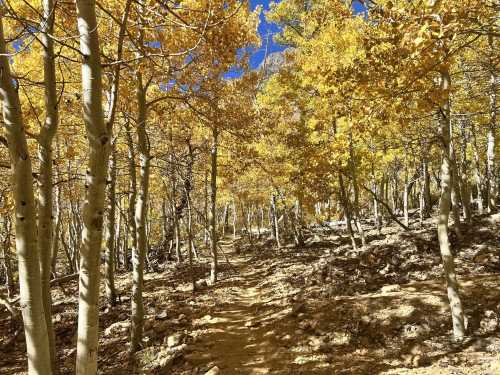Natural beauty takes on so many forms. From deserts to beaches, from trees to waterfalls, etc., there is just so much to explore and enjoy throughout the state. Some natural wonders are remote or inaccessible while others are hiding in plain sight, even in the city. And some are stationary, always there whenever you want to visit, whereas others, like this rare natural phenomenon in Southern California, are occasional, requiring you to be in the right place at the right time.
According to researchers, there are only 30 sand dune fields in the entire world that have the right conditions to create a unique phenomenon referred to as “singing sand” or “booming dunes.”
California has four such sand dune fields, one of which is Dumont Dunes, located just outside of Death Valley National Park and just 30 miles north of Baker, California.
Dumont Dunes is particularly popular with ATV and off-roading enthusiasts, as well as desert camping, but few people know what makes these dunes really special.
When conditions are just right and a large number of sand grains slide gently and steadily down a slope on the dunes, it creates an audible vibration that scientists have termed “singing.”
The vibration occurs when enough sand avalanches and the air is moved and compressed between the grains, causing the grains to bump into each other rapidly. The sound that is produced is a low, booming hum, like an eerie “song.”
The phenomenon has been likened to what happens when air moves through a person’s vibrating vocal cords causing sounds.
During storms or strong wind, which is common in the dunes and largely responsible for their formation, these avalanches occur naturally and the “singing” can be heard by anyone who happens to be on the dunes.
A visiting human can also cause the sand to “sing” by pushing a mass of sand down the face of the dune. Of course, this requires a strenuous climb to the top of these huge sand hills.
Each of the estimated 30 booming dunes in the world is said to have its own pitch or “voice.” It seems there are several factors that not only make the sound possible but determine the particular tone.
Researchers say that the vital factors in creating the rare sound are very clean sand, consistently-sized grains, very dry conditions, and a fairly steep (though not too steep) angle of slope.
The size of the actual sand grains apparently has a lot to do with the actual tone and clarity of the "song."
Eureka Dunes, pictured here, is one of the other sand dune fields in California known to have “singing sand.” The dunes are located about 130 miles (as the crow flies) northeast of Dumont Dunes.
Another singing dune is Panamint Dunes, located roughly between Eureka and Dumont Dunes, and is less accessible than the other locations.
The fourth place where you can hear the singing, or booming, sands in California, is Kelso Dunes, the largest sand field in California’s Mojave Desert.
The singing dunes are an impressive natural phenomenon that few have experienced. Did you know about the singing sand of Dumont (or other) Dunes? Better yet, have you ever heard them? Please share your experience with us in the comments! Here are a few more natural wonders that you can see in SoCal for free.
Subscribe to our newsletter
Get the latest updates and news
Thank you for subscribing!
























